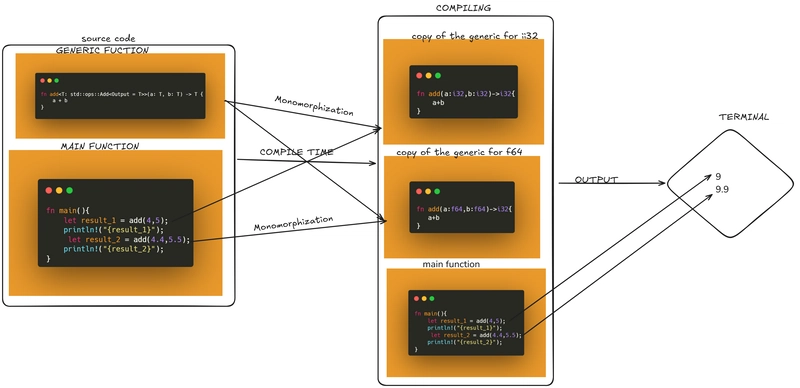Alien Dictionary
Problem statement You have been given a sorted (lexical order) dictionary of an alien language. Write a function that returns the order of characters as a string in the alien language. This dictionary will be given to you as an array of strings called 'dictionary', of size 'N'. Example If the dictionary consists of the following words:- ["caa", "aaa", "aab"], and 'K' is 3. Then, the order of the alphabet is - ['c', 'a', 'b'] Note If the language consists of four letters, the four letters should be the starting four letters of the English language. However, their order might differ in the alien language. Test Cases Sample Input 1 : 3 1 a aa aaa Sample Output 1 : true Explanation For Sample Output 1 : The words are 'a', 'aa', and 'aaa'. Since the unique character here is 'a', the array to be returned will just be ['a']. The 'true' being printed signifies that the output returned by the function is valid. Sample Input 2 : 3 3 caa aaa aab Sample Output 2 : true Constraints 1 ≤ N ≤ 300 1 ≤ K ≤ 26 1 ≤ Length of words ≤ 50 Intuition Let's take the example [caa, aaa, aab]. In the alien dictionary, caa comes before aaa. WHY? In a regular dictionary, aaa will come before caa because a is before c in lexicographic order. If we consider the same scenario for the alien dictionary, caa comes before aaa because c comes before a. c a a != = = a a a c comes before a. Now consider the following two words [aaa, aab]. Keeping in mind the same logic, aaa comes before aab because a comes before b. a a a = = != a a b a comes before b. So we need to find the character ordering similar to abcde....z for the alien dictionary. One thing that comes to our mind is topological sorting, which will find the order in which certain operations will happen (here, the order of the alphabet in an alien dictionary). So we will build the graph and do Kahn's algorithm or the DFS algorithm to find the topological sorting. Algorithm Build the graph after comparing the words in the dictionary. We need to connect the nodes the very first moment we see a difference in the equality of characters. After we build the graph, find the indegree of the nodes. Do the BFS by adding all the nodes of indegree = 0 into the queue. Repeat the process for all indegree = 0 nodes for the neighbouring nodes. This is Kahn's algorithm. Time and Space Complexity O(k + (dictionaryLength * maxOfWordLength)) graph build + O(K + E) for indegree + O(K + E) for bfs + O(K) for final appending to the string O(K + E) Space complexity Code import java.util.*; public class Solution { public static String getAlienLanguage(String []dictionary, int k) { // Write your code here. if (dictionary == null || dictionary.length == 0) { return ""; } List graph = buildGraph(dictionary, k); StringBuilder alienWord = new StringBuilder(); int [] indegree = findIndegree(graph, k); List orderOfAlphabets = findOrderOfAlphabets(graph, k, indegree); for (Integer alphabets : orderOfAlphabets) { char respCharacter = (char)(alphabets + 'a'); alienWord.append(respCharacter); } return alienWord.toString(); } private static int [] findIndegree(List graph, int k) { int [] indegree = new int [k]; for (int letter = 0; letter

Problem statement
You have been given a sorted (lexical order) dictionary of an alien language.
Write a function that returns the order of characters as a string in the alien language. This dictionary will be given to you as an array of strings called 'dictionary', of size 'N'.
Example
If the dictionary consists of the following words:-
["caa", "aaa", "aab"], and 'K' is 3.
Then, the order of the alphabet is -
['c', 'a', 'b']
Note
If the language consists of four letters, the four letters should be the starting four letters of the English language.
However, their order might differ in the alien language.
Test Cases
Sample Input 1 :
3 1
a aa aaa
Sample Output 1 :
true
Explanation For Sample Output 1 :
The words are 'a', 'aa', and 'aaa'. Since the unique character here is 'a', the array to be returned will just be ['a'].
The 'true' being printed signifies that the output returned by the function is valid.
Sample Input 2 :
3 3
caa aaa aab
Sample Output 2 :
true
Constraints
1 ≤ N ≤ 300
1 ≤ K ≤ 26
1 ≤ Length of words ≤ 50
Intuition
Let's take the example [caa, aaa, aab]. In the alien dictionary, caa comes before aaa. WHY?
In a regular dictionary, aaa will come before caa because a is before c in lexicographic order. If we consider the same scenario for the alien dictionary, caa comes before aaa because c comes before a.
c a a
!= = =
a a a
c comes before a.
Now consider the following two words [aaa, aab]. Keeping in mind the same logic, aaa comes before aab because a comes before b.
a a a
= = !=
a a b
a comes before b.
So we need to find the character ordering similar to abcde....z for the alien dictionary. One thing that comes to our mind is topological sorting, which will find the order in which certain operations will happen (here, the order of the alphabet in an alien dictionary). So we will build the graph and do Kahn's algorithm or the DFS algorithm to find the topological sorting.
Algorithm
- Build the graph after comparing the words in the dictionary.
- We need to connect the nodes the very first moment we see a difference in the equality of characters.
- After we build the graph, find the indegree of the nodes.
- Do the BFS by adding all the nodes of indegree = 0 into the queue.
- Repeat the process for all indegree = 0 nodes for the neighbouring nodes. This is Kahn's algorithm.
Time and Space Complexity
O(k + (dictionaryLength * maxOfWordLength)) graph build +
O(K + E) for indegree +
O(K + E) for bfs +
O(K) for final appending to the string
O(K + E) Space complexity
Code
import java.util.*;
public class Solution {
public static String getAlienLanguage(String []dictionary, int k) {
// Write your code here.
if (dictionary == null || dictionary.length == 0) {
return "";
}
List<List<Integer>> graph = buildGraph(dictionary, k);
StringBuilder alienWord = new StringBuilder();
int [] indegree = findIndegree(graph, k);
List<Integer> orderOfAlphabets = findOrderOfAlphabets(graph, k, indegree);
for (Integer alphabets : orderOfAlphabets) {
char respCharacter = (char)(alphabets + 'a');
alienWord.append(respCharacter);
}
return alienWord.toString();
}
private static int [] findIndegree(List<List<Integer>> graph, int k) {
int [] indegree = new int [k];
for (int letter = 0; letter < k; letter++) {
List<Integer> children = graph.get(letter);
for (Integer child : children) {
indegree[child]++;
}
}
return indegree;
}
private static List<Integer> findOrderOfAlphabets(List<List<Integer>> graph, int k, int [] indegree) {
List<Integer> orderOfAlphabets = new ArrayList<>();
Queue<Integer> queue = new LinkedList<>();
for (int letter = 0; letter < k; letter++) {
if (indegree[letter] == 0) {
queue.offer(letter);
}
}
while (!queue.isEmpty()) {
int topLetter = queue.poll();
orderOfAlphabets.add(topLetter);
List<Integer> children = graph.get(topLetter);
for (Integer child : children) {
indegree[child]--;
if (indegree[child] == 0) {
queue.offer(child);
}
}
}
return orderOfAlphabets;
}
private static List<List<Integer>> buildGraph(String [] dictionary, int k) {
List<List<Integer>> graph = new ArrayList<>();
for (int node = 0; node < k; node++) {
graph.add(new ArrayList<>());
}
int dictionaryLength = dictionary.length;
for (int index = 0; index + 1 < dictionaryLength; index++) {
String word1 = dictionary[index];
String word2 = dictionary[index + 1];
int diffIndex = -1;
int word1Length = word1.length();
int word2Length = word2.length();
int maxLength = Math.min(word1Length, word2Length);
int index1 = 0;
while (index1 < maxLength) {
if (word1.charAt(index1) != word2.charAt(index1)) {
diffIndex = index1;
break;
}
index1++;
}
if (diffIndex != -1) {
char diffAtWord1 = word1.charAt(diffIndex);
char diffAtWord2 = word2.charAt(diffIndex);
graph.get(diffAtWord1 - 'a').add(diffAtWord2 - 'a');
}
}
return graph;
}
}











































































































































































![[The AI Show Episode 142]: ChatGPT’s New Image Generator, Studio Ghibli Craze and Backlash, Gemini 2.5, OpenAI Academy, 4o Updates, Vibe Marketing & xAI Acquires X](https://www.marketingaiinstitute.com/hubfs/ep%20142%20cover.png)




























































































































![[DEALS] The Premium Learn to Code Certification Bundle (97% off) & Other Deals Up To 98% Off – Offers End Soon!](https://www.javacodegeeks.com/wp-content/uploads/2012/12/jcg-logo.jpg)


![From drop-out to software architect with Jason Lengstorf [Podcast #167]](https://cdn.hashnode.com/res/hashnode/image/upload/v1743796461357/f3d19cd7-e6f5-4d7c-8bfc-eb974bc8da68.png?#)








































































































.png?#)


































_Christophe_Coat_Alamy.jpg?#)
.webp?#)
 (1).webp?#)






































































































![Apple Considers Delaying Smart Home Hub Until 2026 [Gurman]](https://www.iclarified.com/images/news/96946/96946/96946-640.jpg)
![iPhone 17 Pro Won't Feature Two-Toned Back [Gurman]](https://www.iclarified.com/images/news/96944/96944/96944-640.jpg)
![Tariffs Threaten Apple's $999 iPhone Price Point in the U.S. [Gurman]](https://www.iclarified.com/images/news/96943/96943/96943-640.jpg)

































































































































